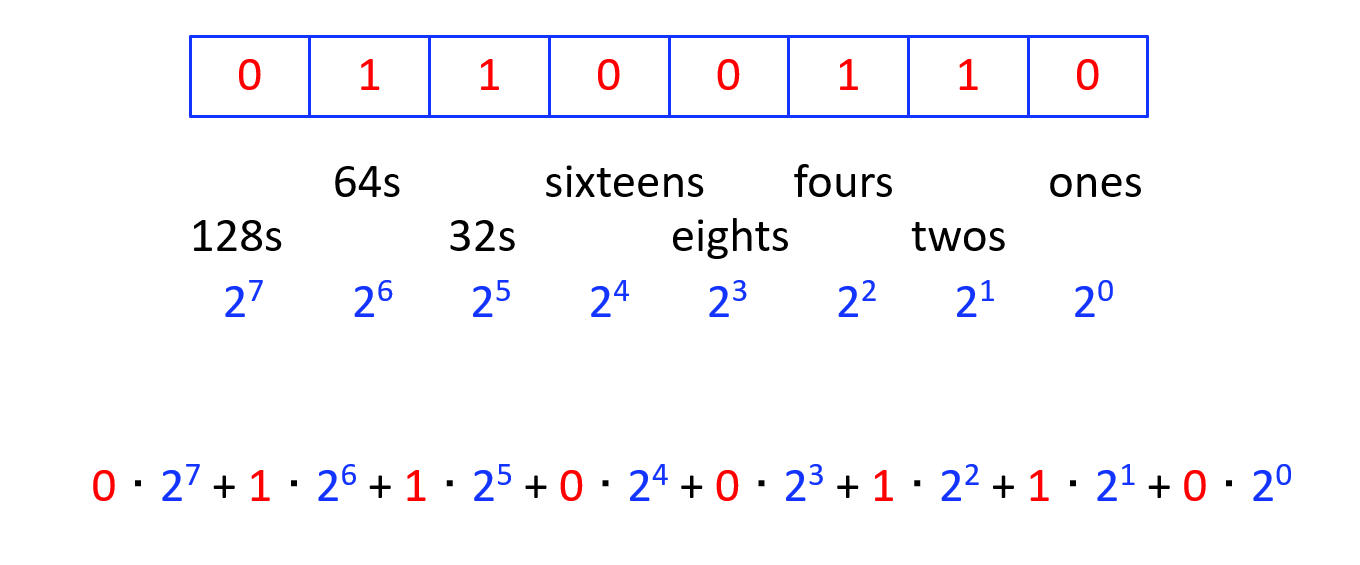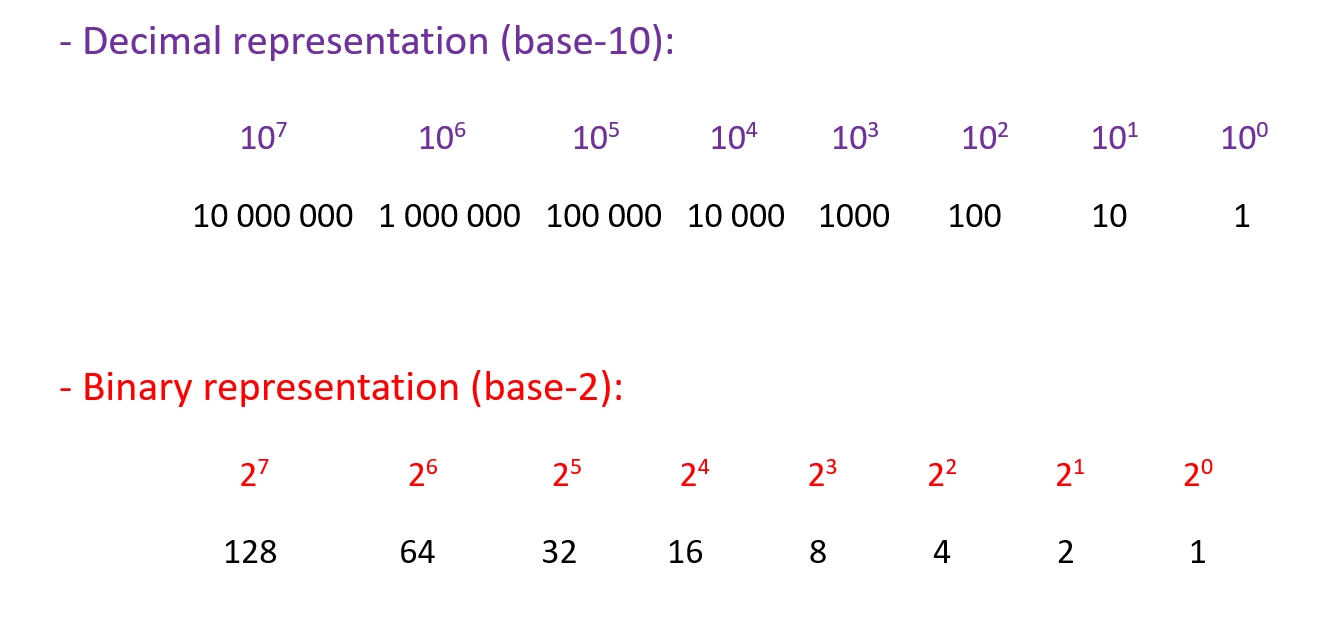Section 5.2 Storing Positive Integers
Computers speak in binary, which is how integers are stored in memory.
Let’s start by reviewing binary numbers:
Video Description.
Computers only speak in binary
Binary can only include 0s and 1s
8 bits = 1 byte
Binary is a base-2 system
Figure 5.1.
Investigate 5.3 .
What is the decimal value of
01000001?
Computers "speak" in binary (base-2) only, which includes only 1s and 0s.
Bit : one b inary digit (0 or 1)
Byte : number of bits used to represent a character, almost always 8 bits
Word : natural unit of memory for a given computer design; unit of data that can pass across the bus to or from main memory at one time
For example, in the 8-digit binary number
01100110, the left-most bit is the
M ost
S ignificant
B it, and the right-most bit is the
L east
S ignificant
B it.
In decimal (base-10), the number
135 can be represented as:
\begin{equation*}
135 = 1\cdot 10^2 \; + \; 3\cdot 10^1 \; + \; 5\cdot 10^0
\end{equation*}
where
\(10^2\) is the "hundreds" place,
\(10^1\) is the "tens" place, and
\(10^0\) is the "ones" place.
Instead of base-10, what if we have base-
b ?
\begin{equation*}
(number)_b = a_nb^n + a_{n-1}b^{n-1} + ... + a_0b^0
\end{equation*}
\(b\text{:}\) base (binary: 2, decimal: 10, ...)
\(a_k\text{:}\) digits (binary: 0-1, decimal: 0-9, in general 0-(b-1))
\(n\text{:}\) position of "most significant digit" (MSD)
Special case: base
\(b = 2\) (binary) -- note: in binary there are only two different digits: 0 and 1
Note: Digits have different weights (place values)
Check Your Understanding Check Your Understanding
1. 2. Next, we’ll learn how to convert between different binary and decimal representations:
Video Description.
How to convert from decimal to binary
By repeatedly dividing by 2, the remainder (0 or 1) represents digits of the binary number
The remainders are written from right-to-left
The same method works for any other base as well
Investigate 5.4 .
What is the remainder when dividing 50 by 3?
How do we convert from one base to another?
In particular, how do we find the binary representation (base-2) of a decimal number (base-10)?
Example: What is
135 decimal in binary or
base-2 ?
Hint: The easiest way to do this is to divide the number by 2 repeatedly and keep track of the remainder.
135 /2 = 67 R1 * 2^0
67 /2 = 33 R1 * 2^1
33 /2 = 16 R1 * 2^2
16 /2 = 8 R0 * 2^3
8 /2 = 4 R0 * 2^4
4 /2 = 2 R0 * 2^5
2 /2 = 1 R0 * 2^6
1 /2 = 0 R1 * 2^7
135 -> 1000 0111
Does it work? 128 + 4 + 2 + 1 = 135
and... does this work for any base?
Example: what does the algorithm say
135 is in... base-10?
135 /10 = 13 R5 * 10^0 LSD
13 /10 = 1 R3 * 10^1
1 /10 = 0 R1 * 10^2 MSD
135 -> 135
There are other ways to find the binary representation of a number.
Recall the binary place values:
135 = 1 * 128 + 7
7 = 0 * 64 + 0 * 32 + 0 * 16 + 0 * 8 + 1 * 4 + 3
3 = 1 * 2 + 1
1 = 1 * 1
135 = 1 * 128 + 0 * 64 + 0 * 32 + 0 * 16 + 0 * 8 + 1 * 4 + 1 * 2 + 1 * 1
Thus
135 is 10000111 in binary.
Check Your Understanding Check Your Understanding
1. 2. 

